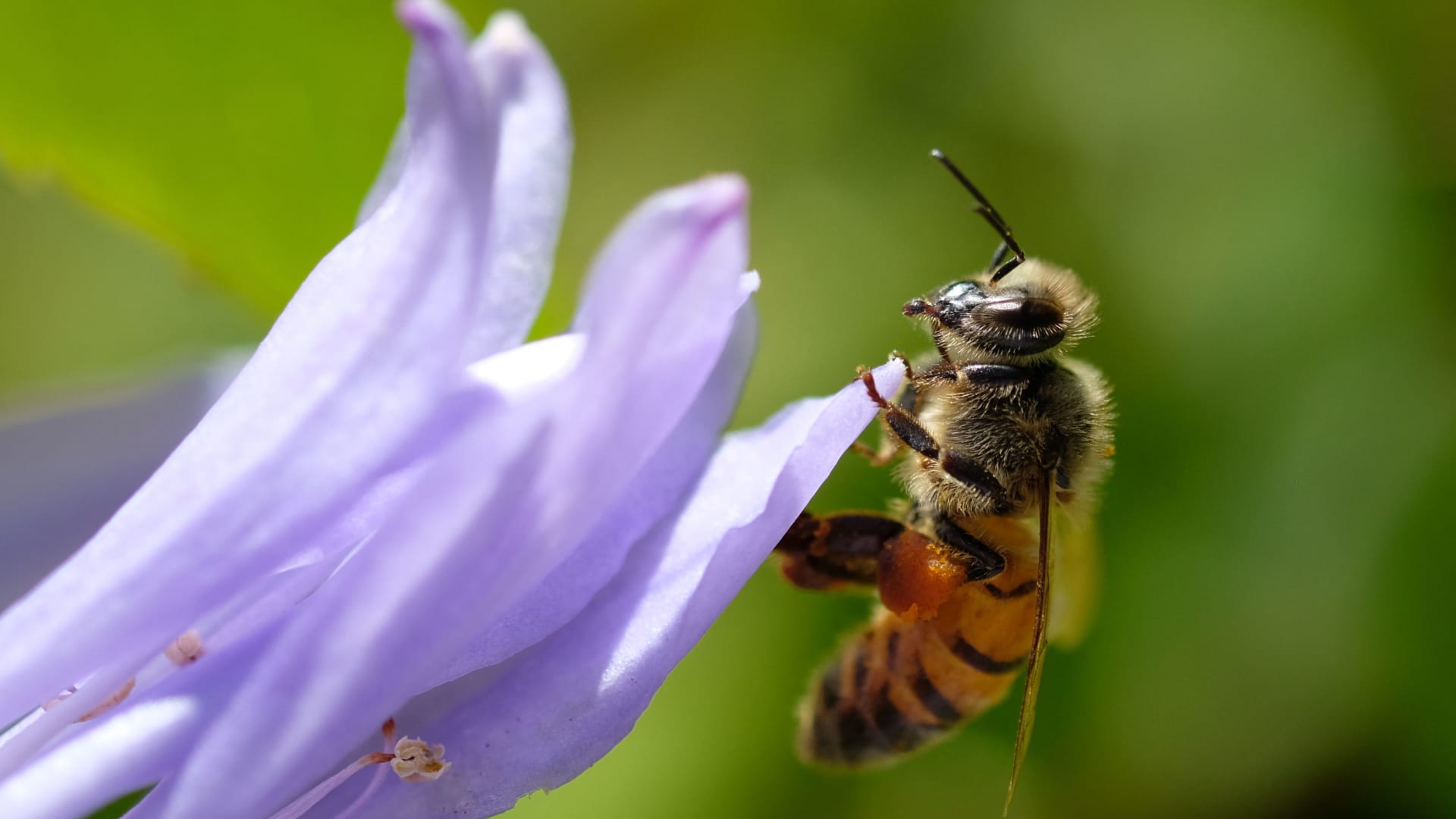
A bee collects pollen from flowers in Los Angeles June 9, 2021.
Chris Delmas | AFP | Getty Images
As the climate warms, allergy season in the United States could get worse.
If carbon emissions go unchecked, pollen season could start up to 40 days earlier and last 19 days longer by the end of the century, according to a study published Tuesday in the journal Nature Communications. This would increase annual pollen emissions in the U.S. by as much as 40 percent.
Using historical pollen data and predictive climate models, the researchers were able to paint a picture of how and when plants and trees could release pollen in the coming decades.
Experts note that overall, every region in the U.S. has experienced longer and more intense allergy seasons for the past 30 years.
“Pollen seasons are starting a lot earlier than they did in the 1990s. They are longer and have about 20 percent more pollen in the air,” said William Anderegg, an associate professor of biology at the University of Utah, who was not involved with the new study.
Patrick Kinney, a professor of environmental health at Boston University School of Public Health, said that the new findings “suggest that the trends that we are already observing will continue into the future.”
For people with allergies or asthma, the increase in pollen could have serious consequences.
“We think of allergies as stuffy noses and itchy eyes, but it also underlies asthma, which is a more serious condition,” sad Kinney, who was also not involved with the new research. “People will probably feel worse and need more medication as time goes on, and more people will likely become allergic to pollen as well.”
The climate-pollen connection
According to Yingxiao Zhang, a doctoral candidate in climate sciences at the University of Michigan and the study’s lead author, precipitation and the amount of carbon dioxide in the atmosphere both play a role in how much pollen plants produce and emit, since giving plants more food and water makes them grow bigger and produce more pollen. When factoring in carbon dioxide emissions, human-caused pollution could fuel a 250 percent rise in annual pollen emissions.
But rising temperatures, driven by increasing amounts of greenhouse gasses in the atmosphere, are the main factor. As average temperatures steadily rise because of climate change, spring is starting earlier.
“Current data is very limited, and it’s not enough for us to understand the effect that increased carbon dioxide has on pollen. But we do currently know that temperature increases pollen, and we’re already seeing that now,” Zhang said.
Zhang and her team used two sets of data to construct their model. First, they used historical pollen data collected from almost 100 sites across North America to better understand the relationship between pollen emissions and different drivers of climate change, such as temperature and the amount of carbon dioxide in the atmosphere. They combined this data with data from 15 different climate models and used this information to build a model that projects what future pollen seasons might look like over the next 80 years, as the climate changes.
They ran their model using two theoretical scenarios: a worst-case scenario, in which no actions to reduce carbon emissions are taken, and a moderate scenario.
In the worst-case scenario, average temperatures on the continent would rise by as much as 6 degrees Celsius, about 11 degrees Fahrenheit. This would extend pollen season by about 30 days. In a moderate scenario, where Earth warms by a maximum of 3 degrees Celsius, or 5.4 degrees Fahrenheit, the season is expected to lengthen by about 10 days.
But pollen changes will look different depending on where in the U.S. a person lives and the composition of the plants and forests nearby, Zhang said. Northern states are expected to see the biggest changes, something scientists have already documented.
In parts of northern Minnesota and North Dakota, for example, ragweed season has lengthened by 21 days from 1995 to 2015, data from the Environmental Protection Agency shows. Ragweed season was six days longer in Oklahoma during the same period.
Historically, trees have dominated the spring pollen season, followed by grass in late summer and ragweed in the fall. But the new model predicts these seasons will overlap in the summer, when warming temperatures cause some plants to flower earlier or later.
“Having the seasons overlap could multiply the misery for allergy sufferers,” Kinney said.







